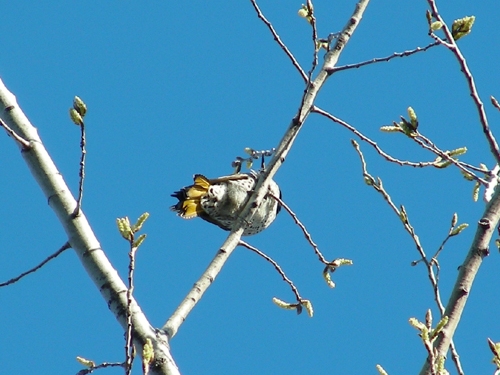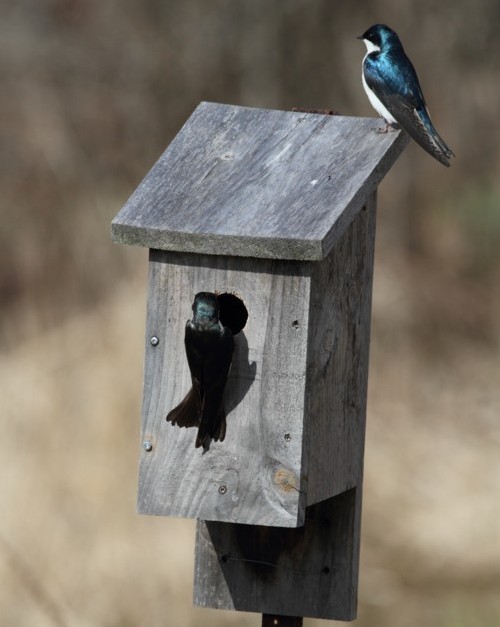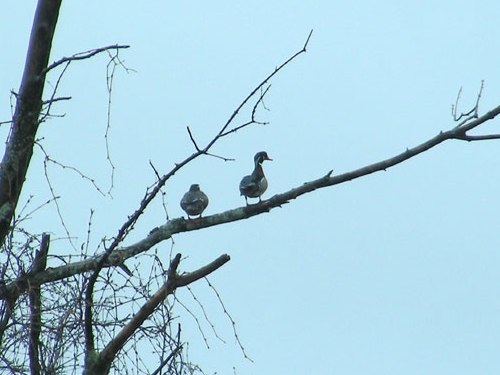|
McGILL BIRD OBSERVATORY |
||||||||||||||||||||||||||||||||||||||||||||||||||||||||||||||||||||
Welcome
to the McGill Bird Observatory weekly report.
Click here for a complete listing of our archives.
Banders-in-charge: Simon Duval, Gay Gruner Notes: Eight new species were added to the 2010 spring list this week: Ring-necked Duck, Common Loon, Double-crested Cormorant, Sharp-shinned Hawk, American Kestrel, Common Raven, Ruby-crowned Kinglet and Rusty Blackbird, bringing the season total to 54. All but the sharpie and raven were new species for 2010, and Ring-necked Duck hasn't been observed at MBO since May 2007. Overall, the birds are fairly numerous, although we haven’t yet had an influx of migrants. Nonetheless, we observed a total of 46 species this week. The songs of Fox Sparrow, Song Sparrow, Swamp Sparrow and Purple Finch dominated the background chorus. What we are optimistically calling our pond regulars (Mallard, Green-winged Teal, Wood Duck and Canada Geese) were briefly joined by two Northern Pintails earlier in the week and four Ring-necked Ducks later in the week. Photo quiz answer: Northern Flicker - specifically the eastern form known as Yellow-shafted Flicker ... no other North American bird has such a strongly yellow undertail combined with a whitish belly.
Our top ten list is certainly consistent: five of our top-ten species (Red-winged Blackbird, American Crow, Canada Goose, Song Sparrow and American Robin) have ranked in the top-ten list of the third week of April each year since 2006! In fact the only two species that have never ranked in the top ten at this time of year are Tree Swallow and American Goldfinch, with the Tree Swallows probably earlier than normal this year due to the unusually mild temperatures over most of the past month. Conversely, while Canada Goose migration usually doesn't taper off until early May, it looks like the migrants may have already largely moved through - in past years, the lowest daily average count during week 3 was 66, six times higher than what we recorded this year! Next week the spring migration monitoring program kicks into high gear, with daily banding (weather permitting) continuing through until June 1. We expect that the early spring will be noticeable in atypical banding counts for week 4, since some species usually arriving only around this time have already been back in time ... but we will all have to wait to see what the numbers show after the week is done..
|



